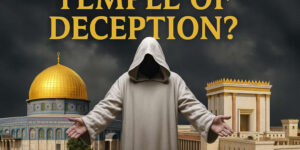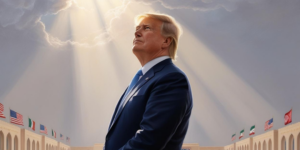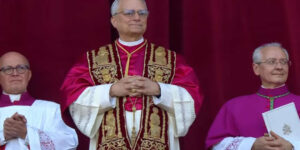10 Examples of How the Story of Jesus Has Universal Appeal
Jesus, as the Creator, has his DNA embedded in the fabric of reality. As the logos or divine template, He is the cosmic archetype imprinted on all living and nonliving entities. An archetype is a universal pattern manifesting across cultures in symbols, themes and characters.
The following are 10 examples of how the story of Jesus has universal appeal.
1. Alice in Wonderland: The story begins with Alice following a white rabbit and falling down a rabbit hole into Wonderland. It represents a transition from innocence to a world filled with chaos, challenges and moral ambiguities. This descent and the trials she faces can be seen as a spiritual quest or journey akin to those undertaken by biblical figures. Her decisions reflect moral and ethical choices similar to those biblical characters face. The garden she discovers symbolizes Eden, while her fall parallels the fall of Man. When she awakens from sleep, she realizes it is a dream. This corresponds to the resurrection story since sleep is a symbolic death, and awakening is a symbolic resurrection.
2. Snow White: Snow White may represent purity and innocence, like Adam and Eve in their original sinless state. Her poisoning after eating the apple, leading to a deathlike sleep, can be compared to the fall in Genesis after Adam and Eve ate the forbidden fruit. Her later revival has echoes of biblical resurrection narratives since she awoke out of symbolic death after she was rescued by a prince who represents the Christ archetype. The conflict between good and evil symbolizes the perpetual spiritual struggle in the Christian faith against demonic forces.
3. Christmas and Santa Claus: Santa Claus originated from the generosity of a fourth-century Christian monk, St. Nicholas, who was said to have dropped money down a chimney to aid a needy family. Gift-giving also mirrors the magi bringing gifts as a form of worship toward the baby Jesus. It also reflects the Christian ethos of kindness, giving and self-sacrifice, which emulates Jesus, who gave gifts unto men (Eph. 4:8).
4. Christmas Trees: The decorated tree is another Christological symbol. Its eternal greenery honors Jesus as the enduring source of life who conquers death itself. Candles and starry treetop ornaments denote Christ’s illuminating the world with heavenly light. Packages beneath emulate blessings stemming from Christ’s crucifixion, while decorations reflect believers’ purified souls sparkling with the gifts of eternal life once tasted from the tree.
5. Easter Eggs and Bunnies: Eggs represent new life, fitting Easter themes. Egg hunts metaphorically reflect the discovery of Jesus’ empty tomb on resurrection morning. Rabbits denote fertility and connect to springtime renewal after the death of winter, typifying the death and resurrection themes of Jesus.
6. A.D./B.C. Calendar System: The Anno Domini system was popularized to mark years based on Jesus’ birth. Dividing history into before and after Christ is theologically loaded. It implies that regardless of other pivotal figures, Jesus Christ is the central character of history. B.C. and A.D. also assert that the cataclysmic event with the birth of God Himself as man on earth is the definitive event that splits the cosmological calendar in half forever. Dating based on Jesus’ advent subtly confesses that here is the hinge and meaning of the human journey: God has visited humanity to redeem all people to Himself through Jesus.
7. Thanksgiving: Historically tied to the Pilgrims, Thanksgiving resonates with Judeo-Christian gratitude and communal meal traditions such as holy Communion, by which we proclaim the gospel (1 Cor. 11:26). Though secular today, its emphasis on thankfulness aligns with biblical principles of praise towards God for his marvelous provision.
8. Hero Narrative Patterns: Mythologist Joseph Campbell outlined a monomyth structure shared across religions and stories worldwide in his book, “The Hero with 1000 Faces,” an archetypal hero’s journey. This shows the generic imprint of the embedded divine Jesus narrative that spilled over into many pre-gospel mythologies and world religions.
The hero narrative typically includes a pattern consisting of the call to adventure, the encounter with a mentor, facing trials and tribulations, achieving a victory and returning home transformed.
Some argue this hero process fits the pattern of Jesus:
— The call to adventure equals the incarnation.
— The encounter with a mentor equals Jesus’ dependence upon His Father.
— The facing of trials and tribulations equals Jesus in the wilderness
— Achieving a victory equals the Resurrection.
— Returning home transformed equals His anticipated second bodily return.
Sign up NOW for a FREE Charisma Magazine Online 30-day trial!
9. Death and Rebirth Archetypes: Dying and rising gods are widespread in ancient myths; this demonstrates the embedded divine creation metaphor of death and resurrection that eventually culminated in Jesus Christ. Some examples are:
— In Egyptian mythology, Osiris, the god of the underworld and judge of the dead, was killed, and Isis resurrected Osiris, who then became the ruler of the underworld.
— In Norse mythology, it is prophesied that after the death of Baldr, he would be reborn in a new world following Ragnarök, the end of the world.
— In Greek mythology, Persephone, the goddess of the harvest, is abducted by Hades and taken to the underworld. Her eventual return to the surface for part of the year symbolizes the resurrection of life in spring after the death of winter.
Yet crucial differences suggest Christ’s unique reality since verifiable eyewitnesses recount Christ’s passion and Resurrection. Jesus also willingly offered Himself as a substitutionary atonement for sin. Mythical sacrifices lose potency over time, whereas Jesus’ cross permanently restores humanity to God. Jesus, therefore, typifies what other resurrection myths seek: factual dying and rising that achieves eternal salvation for humanity.
10. Imago Dei as Icon of Christ: The biblical concept of humans made in God’s image underpins modern notions of human rights, justice and dignity, shaping views on morality. Since Jesus is the image of the invisible God, every human is a reflection or icon of Jesus, which becomes the foundation of all human dignity and rights in nations affected by the gospel (Gen. 1:27, Col. 1:15).
Examples across history and culture reveal imprints of Jesus’ story, which generate meaning and beauty but find full expression through Christ alone. These symbols manifest the soul’s longing for God fulfilled ultimately in Jesus. {eoa}
Join Charisma Magazine Online to follow everything the Holy Spirit is doing around the world!
Dr. Joseph Mattera is an internationally known author, consultant and theologian whose mission is to influence leaders who influence culture. He is the founding pastor of Resurrection Church and leads several organizations, including the U.S. Coalition of Apostolic Leaders and Christ Covenant Coalition.






































